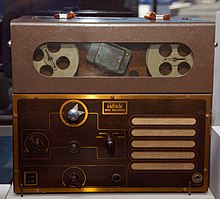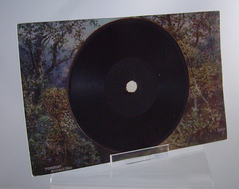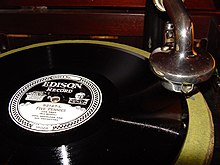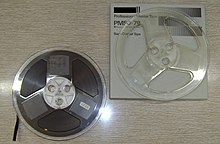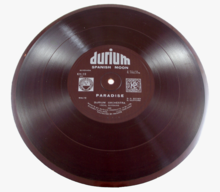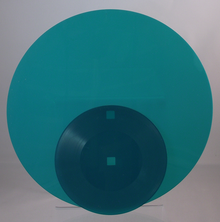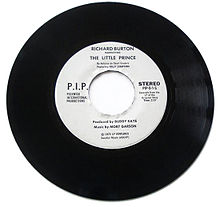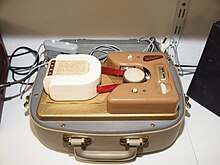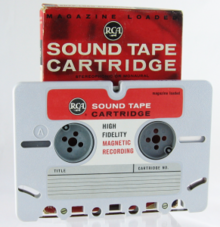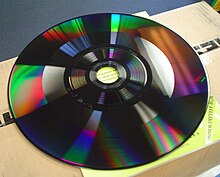Consumable Music Formats
There are a few ways that you music can be exported from your chosen music software, but it can be difficult if you don’t know what each of the different music formats mean.
Here’s is a run down of some of the more common music format:
Music Formats
MP3 – MPEG-2 Audio Layer 3, or MP3 as it is more commonly known, is possibly the most well know music format. It uses a form of lossy data compression to compress the file so that it is as small as possible, while still sounding close to the original recording quality, to allow for playback on digital audio devices, consumer streaming or storage.
AV – A Waveform Audio File Format, or a .wav as is it commonly called, is the main format used on Windows computer systems. It is an uncompressed audio format and therefore is a closer representation of the original recording quality.
AIFF – Audio Interchange File Format, known as AIFF, is the main format used by Apple computer systems. It is an uncompressed audio format and therefore takes up more disc space than lossy audio formats.
PCM – Pulse Code Modulation, or PCM, is an uncompressed audio format that is used in computers, CDs, and other digital audio applications to digitally represent sampled analogue signals.
FLAC – FLAC stands for Free Lossless Audio Codec which, as the name suggests, uses lossless compression for digital audio. Files compressed into this format can be reduced to 50-60% of it’s original size and will then decompress this into an identical copy of the original audio file.
AAC – Advanced Audio Coding, or AAC file, uses lossy data compression and was designed to be the successor of the MP3 format. These files tend to achieve better sound quality than MP3s while using similar bit rates.
Bit Depth
 A bit depth is the number of ‘bits’ of information that is transferred in each sample, this corresponds directly with the resolution of each sample. A real-world example of the differences in bit depth uses would be CDs, which use 16 bits per sample (16-bit) and blu-ray discs which use 24 bits per sample (24-bit).
A bit depth is the number of ‘bits’ of information that is transferred in each sample, this corresponds directly with the resolution of each sample. A real-world example of the differences in bit depth uses would be CDs, which use 16 bits per sample (16-bit) and blu-ray discs which use 24 bits per sample (24-bit).
The larger the bit depth, the more bits are transferred per sample, which thereby increases the quality of the audio along with the size of the file itself.
Sample Rate
The sample rate is the number of samples of audio that are carried over per second, this can be measured in Hertz (Hz) or kilohertz (kHz). There are 1000 Hz in 1 kHz so 44,100 samples per second can be written either as 44,100 Hz or 44.1 kHz. CD quality audio files are sampled at 44.1 kHz, whereas the higher quality equivalent could be written as 96,000 Hz or 96 kHz.
The bandwidth is the difference between the highest and lowest frequencies in an audio file.
Bit Depth and Sample Rate
| Bit Depth | Sample Rate |
|---|---|
| 16-bit | 44,100Hz |
| 16-bit | 48,000Hz |
| 24-bit | 96,000Hz |
Timeline of audio format developments
| Year | Physical media formats | Recording formats |
|---|---|---|
| 1860 | Phonautogram |
1859 model of Édouard-Léon Scott de Martinville‘s phonautograph Mechanical analog; sound waveform transcribed to paper or glass |
| 1877 | Tinfoil Phonograph |
Mechanical analog; sound waveform transcribed to tinfoil |
| 1883 | Piano roll |
Mechanical digital (Vacuum operated piano) |
| 1886 | Music Box disc |
Mechanical digital (Vacuum operated music box) |
| Late1880s | Brown Wax Cylinder |
Mechanical analog; vertical grooves, vertical stylus motion – could be re-recorded |
| Organ Cob | Mechanical digital (Vacuum operated organ) | |
| Ediphone, Dictaphone |
Mechanical analog, the Ediphone and subsequent wax cylinders used in Edison’s other product lines continued to be sold up until 1929 when the Edison Manufacturing Company folded. |
|
| Phonograph disk (Emile Berliner Patent) | Mechanical analog; lateral grooves, horizontal stylus motion | |
| 1894 | Pathé cylinder |
Mechanical analog; vertical grooves, vertical stylus motion |
| 1898 | Wire recording |
Analog; magnetization; DC bias |
| 1901 | 10” 78rpm Record |
Mechanical analog; lateral grooves, horizontal stylus motion – made from shellac |
| 1902 | Edison Gold Moulded Record |
Mechanical analog; vertical grooves, horizontal stylus motion – made from hard black wax – 160rpm standard – 100 threads per inch |
| 1903 | 12” 78rpm record | Mechanical analog; lateral grooves, horizontal stylus motion |
| Gramophone Postcard |
Mechanical analog; lateral grooves, horizontal stylus motion |
|
| 1905 | Centre-start phonograph Record |
Mechanical analog; lateral grooves, horizontal stylus motion, starts from the centre of the disc |
| Pathé Disc |
Mechanical analog; vertical grooves, vertical stylus motion |
|
| 1907 | Indestructible Record |
Mechanical analog; vertical grooves, vertical stylus motion – made from black celluloid with cardboard and inner metal bands |
| 1908 | Amberol Cylinder Record |
Mechanical analog; vertical grooves, vertical stylus motion – made from hard black wax – 160rpm standard – 200 threads per inch |
| 1912 | Diamond Disc |
Mechanical analog; vertical grooves, vertical stylus motion – made from shellac |
| Blue Amberol cylinder record |
Mechanical analog; vertical grooves, vertical stylus motion – made from blue celluloid with plaster of paris core – 160rpm standard – 200 threads per inch |
|
| 1925 | Electrical cut record | Mechanical analog; electrically cut from amplified microphone signal, lateral grooves, horizontal stylus motion, discs at 7″, 10″, 12″, most at 78 rpm |
| 1930 | Filmophone flexible record |
Mechanical analog; lateral groove, horizontal stylus movement – made from cellulose of various colours – 78rpm |
| 1930s | Reel-to-reel, magnetic tape |
Analog; magnetization; AC “bias” dramatically increases linearity/fidelity, tape speed at 30 ips, later 15 ips and other refined speeds: 7½ ips, 3¾ ips, 1⅞ ips |
| Electrical transcriptions | Mechanical analog; electrically cut from amplified microphone signal, high fidelity sound, lateral or vertical grooves, horizontal or vertical stylus motion, most discs 16″ at 33⅓ rpm | |
| 1932 | Durium Record |
Mechanical analog; lateral groove – made from a brown resin (“Durium) |
| 1942 | SoundScriber |
Mechanical Analog; vertical groove, 4–6 inch discs, it recorded sound by pressing grooves into soft vinyl discs |
| 1947 | Dictabelt (Memobelt) | Analog, medium consisting of a thin, plastic belt 3.5″ wide that was placed on a cylinder and rotated like a tank tread, developed by the Dictaphone company in 1947 |
| 1948 | Vinyl LP record (Columbia) |
Analog, with preemphasis and other equalization techniques (LP, RIAA); lateral grooves, horizontal stylus motion; discs 7″, 10″ and 12″ at 33⅓ rpm, 1st LP Columbia ML 4001 Milstein, Mendelssohn Violin Concerto |
| 1949 | Vinyl 45 record (RCA) |
Analog 45 rpm vinyl 7″ disk, first 45 pressed “PeeWee the Piccolo” RCA 47-0147 Indianapolis |
| 1950 | Tefifon |
Electro-mechanical analog, vinyl belt housed in a cassette, used an embossing technique using a stylus to imprint the information, was the first thing to resemble a modern audio cassette |
| 16 2/3rpm vinyl record |
Mechanical analog; lateral groove, horizontal stylus motion – played at half the regular speed of an LP |
|
| 1951 | Minifon P55 |
Analog, magnetic wire on reel, 30 cm/s or about 11.8 ips was quickly adopted by many governments as being the ultimate “spy” recorder of its day |
| 1957 | Stereophonic vinyl record |
Analog, with pre-emphasis and other equalization techniques. Combination lateral/vertical stylus motion with each channel encoded 45 degrees to the vertical |
| 1957 | Dictet |
Analog, ¼ tape, 2.48 in/s, (3″ reels housed 5.875 x 3 x .4375 inch cassette), developed by the Dictaphone Corp |
| 1958 | RCA tape cartridge (Sound Tape) (Magazine Loading Cartridge) |
Analog, ¼ inch wide tape (stereo & mono), 3¾ in/s & 1.875 in/s, one of the first attempts to offer reel-to-reel tape recording quality in a convenient format for the consumer market |
| 1959 | NAB Cart Tape (Fidelipac) |
Analog, ¼ inch wide tape in cartridge, 7½ in/s & 15 in/s, Introduced in 1959 by Collins Radio, the cart tape format was designed for use by radio broadcasters to play commercials, bumpers and announcements |
| 1962 | 4-Track (Muntz Stereo-Pak) | Analog, 1⁄4-inch-wide (6.4 mm) tape, 3¾ in/s, endless-loop cartridge |
| 1962 | Compact cassette |
Analog, with bias. 0.15 inches (3.81 mm) tape, 1⅞ ips. 1970: introduced Dolby noise reduction |
| 1964 | Sanyo Micro Pack 35 Channel Master 6546 Westinghouse H29R1 |
¼ inch wide tape housed in a transparent cartridge measuring 2.6 x 2.9 x 1.9 inches, tape was stored on two reels residing atop one another, keeping the cartridge compact |
| 1964 | Sabamobil | A cartridge format for embedding and easy handling usual 3-inch-tape-reels with ¼ inch tape, compatible to reel-to-reel audio recording in 3¾ ips. |
| 1965 | 8-Track (Stereo-8) |
Analog, ¼ inch wide tape, 3¾ in/s, endless-loop cartridge |
| DC-International cassette system |
Analog cassette format introduced by Grundig, Telefunken and Blaupunkt: 120 x 77 x 12 mm cassette with ¼ inch wide tape run at 5.08cm per second. |
|
| 1966 | PlayTape |
Analog, ⅛ inch wide tape, endless-loop cartridge, introduced by Frank Stanton |
| 1969 | Microcassette |
Analog, ⅛ inch wide tape, used generally for note taking, mostly mono, some stereo (developed in the early ’80s). 2.4 cm/s or 1.2 cm/s |
| Minicassette | Analog, ⅛ inch wide tape, used generally for note taking, 1.2 cm/s | |
| 1970 | Quadraphonic 8-Track (Quad-8) (Q8) |
Analog, ¼ inch wide tape, 3¾ in/s, 4-channel stereo, endless-loop cartridge |
| 1971 | Quadraphonic Vinyl Record (CD-4) (SQ Matrix) |
Analog, introduced by CBS RecordsRecorded two tracks on both stereo channels, requiring a decoder to hear all four tracks. Despite this, the format is playable on any LP turntable. |
| 1971 | HiPac | Analog, a successor of the 1966 PlayTape, using tape width of the 1963 Compact Cassette, Japan only |
| 1976 | Dolby Stereo cinema surround sound | Analog |
| Elcaset |
Analog, name comes from “L-Cassette/Large Cassette” |
|
| 1978 | LaserDisc |
Analog; vertical groove, read by a laser |
| 1981 | Capacitance Electronic Disc (CED) |
The Capacitance Electronic Disc (CED) is an analog video disc playback system developed by RCA, in which video and audio could be played back on a TV set using a special needle and high-density groove system similar to phonograph records. |
| 1982 | Compact Disc (CD-DA) |
Digital. Linear PCM (LPCM) |
| 1983 | Betamax Digital Audio |
Digital |
| 1986 | High Definition Compatible Digital (HDCD) |
Digital. Redbook compatible physical CD containing 20–24 bit information (uses linear pulse-code modulation (LPCM) |
| 1987 | Digital Audio Tape (DAT) |
Digital.This audio format famously caused controversy among recording companies when released due to the potential of perfect digital copies to increase piracy[1] |
| 1988 | AIFF (File Format) | Digital. Audio Interchange File Format (AIFF) |
| 1992 | Digital Compact Cassette (DCC) |
Digital, ⅛ inch wide tape, 1⅞ in/s, introduced by Philips and Matsushita in late 1992, marketed as the successor to the standard analog compact cassette |
| WAV (File Format) | Digital. named after the waveform created by a sound wave | |
| Dolby Digital Cinema Sound | Digital. also known as Dolby Stereo Digital until 1994 | |
| MiniDisc (MD)[2] |
Digital. Adaptive Transform Acoustic Coding (ATRAC) |
|
| 1993 | DTS, SDDS, MP3 (File Formats) |
Digital. Digital Theatre System (DTS), Sony Dynamic Digital Sound (SDDS), MPEG-1 Audio Layer III (MP3) |
| 1994 | TwinVQ | Digital. |
| 1995 | RealAudio[2] | |
| 1997 | DVD |
Digital. Dolby Digital, Digital Theatre System (DTS) |
| DTS-CD | Digital. DTS Audio | |
| 1999 | DVD-Audio | Digital. Including Meridian Lossless Packing (MLP), Linear PCM (LPCM), Dolby Digital (AC-3) and Digital Theatre System (DTS) |
| Super Audio CD (SACD) | Digital. Direct Stream Digital | |
| WMA (File Format) | Digital. Windows Media Audio | |
| TTA (File Format) | Digital. The True Audio Lossless Codec | |
| 2000 | FLAC (File Format) | Digital. Free Lossless Audio Codec |
| APE (File Format) | Digital. Monkey’s Audio | |
| 2001 | AAC (File Format) | Digital. Advanced audio coding |
| 2003 | DualDisc |
Digital. Multiple formats encoded onto the same disc |
| 2004 | ALE or ALAC (File Formats) | Digital. Apple Lossless |
| 2005 | HD DVD |
Digital. Dolby TrueHD, DTS-HD Master Audio |
| 2006 | Blu-ray Disc |
Digital. Dolby TrueHD, DTS-HD Master Audio |
| 2008 | slotMusic |
Digital. Usually at 320 kbit/s MP3 on microSD or microSDHC |
| Blu-spec CD | Digital. PCM |








